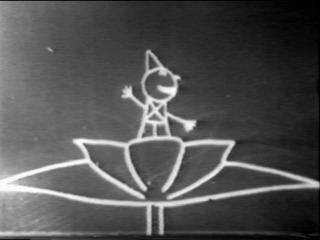 | ||
Animated films in the United States date back to at least 1906 when Vitagraph released Humorous Phases of Funny Faces. Although early animations were rudimentary they rapidly became more sophisticated with such classics as Gertie the Dinosaur in 1914, Felix the Cat, and Koko the Clown.
Contents
Originally a novelty, some early animated silents depicted magic acts or were strongly influenced by the comic strip. Later, they were distributed along with newsreels. Early animation films, like their live-action silent cousins, would come with a musical score to be played by an organist or even an orchestra in larger theatres.
History
The art of animation can be traced back to prehistoric and ancient times when people drew multiple pictures on walls and clay pots to try and capture the illusion of life. This eventually led to the invention of the Zoetrope in 1834. However it was not until the advent of film did animation start to take off. There is no single creator of film animation, since many people were working on several similar projects around the same time.
Georges Méliès; creator of special effect in motion pictures, was one of the first people to use animation with his technique. Méliès discovered a technique when his camera accidentally broke down while shooting a bus driving by. When he had fixed the camera, a hearse happened to be passing by just as Méliès restarted rolling the film, his end result was that he had managed to make a bus transform into a hearse, which is a camera effect called a stop trick. He had discovered that by shooting one frame at a time and changing the image in between frames he could create the illusion of movement, thus stop-motion animation.
J. Stuart Blackton was possibly the first American film-maker to use techniques animation. Several of his films, among them The Enchanted Drawing (1900) and Humorous Phases of Funny Faces (1906) were film versions of Blackton's "lightning artist" routine, and utilized modified versions of Méliès' early stop-motion animation techniques to make a series of blackboard drawings appear to move and reshape themselves. 'Humorous Phases of Funny Faces' is regularly cited as the first true animated film, and Blackton is considered the first true animator.
Another French artist, Émile Cohl, created a film in 1908 called Fantasmagorie. The film largely consisted of a stick figure moving about and encountering all manner of morphing objects, such as a wine bottle that transforms into a flower. There were also sections of live action where the animator’s hands would enter the scene. The film was created by drawing each frame on paper and then shooting each frame onto negative film, which gave the picture a blackboard look. This makes Fantasmagorie the first animated film created using what came to be known as hand-drawn animation.
Following the successes of Blackton and Cohl, many other artists began experimenting with animation. One such artist was Winsor McCay, who created detailed animation with painstaking attention to detail. Each frame was drawn on paper; which invariably required backgrounds and characters to be redrawn and animated. Among McCay's most noted films are Little Nemo (1911), Gertie the Dinosaur (1914) and The Sinking of the Lusitania (1918).
The production of animated short films, typically referred to as "cartoons", became an industry of its own during the 1910s, and cartoon shorts were produced to be shown in movie theaters. The most successful early animation producer was John Randolph Bray, who, along with animator Earl Hurd, patented the cel animation process which dominated the animation industry for the rest of the decade.
The most popular cartoon series during the silent era was Pat Sullivan's Felix the Cat. Felix the Cat was first created in 1919 with Feline Follies and became hugely successful throughout the 1920s. However the studio came into trouble during the advent of sound cartoons in the early 30's when the popularity of Walt Disney's Mickey Mouse was rising above Sullivan's Felix. Sullivan tried to adapt Felix by creating Felix sound cartoons, but they failed to please audiences and Sullivan closed the studio in 1930. He died three years later due to health problems related to alcoholism.
